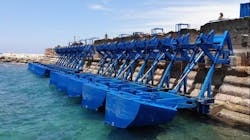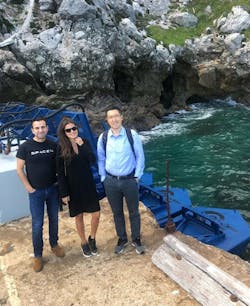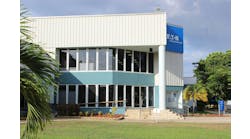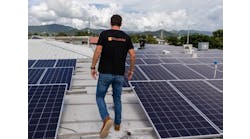The remote Thai island of Koh Tao will soon be energized by a wave-powered microgrid. A consortium of companies and universities is developing the pilot project for the Provincial Electricity Authority (PEA), the Thai government enterprise that will operate the microgrid.
According to a statement from Eco Wave Power, one of the companies in the consortium, the microgrid offers “a forecasted attractive levelized cost of energy for low-income residents [on] islands, in comparison to solar and diesel generators.”
It is expected the PEA electricity tariff on the island will be comparable to that of a monthly mobile phone bill. Under the agreement, residents will not be billed asset ownership or maintenance costs for the microgrid or its components.
Koh Tao is a top destination for scuba divers. The eight-square mile island is also an important breeding gound for Hawksbill and Green turtles.
Generating power with ocean waves
Eco Wave Power, an onshore wave energy company, will provide onshore wave energy converters (WEC), which convert sea or ocean waves into clean energy in an environmentally friendly and cost-effective manner.
“This project presents a unique opportunity for us to research a new technology application for our WEC, customized for islands and other microgrid applications,” said Inna Braverman, founder and CEO of Eco Wave Power.
Other lead partners in the consortium include Toshiba, Hitachi Energy, Aquatera, with additional support coming from the University of Manchester, University of Exeter, the Asian Institute of Technology and Queen Mary University in London.
The pilot will develop and deploy a wave energy microgrid that includes a predictive control system, a radar system that forecasts wave heights and optimizes energy generation as well as load and generation prediction tools powered by artificial intelligence (AI).
The microgrid will also include a wireless distributed energy management system instead of a battery energy storage system, which is typically used in microgrid design.
Grant funding propels development
The consortium was recently awarded a nearly $1.9 million (£1.5 million) grant from the UK’s Energy Catalyst program. Part of Innovate UK, the Energy Catalyst program supports the development of technologies that deliver clean, affordable and accessible energy in sub-Saharan Africa, South Asia or Indo-Pacific regions.
This is the second grant the consortium has received from Innovate UK. The first grant funded a feasibility study for the wave-energy microgrid project.
“In our previous early stage project, we have numerically demonstrated the efficacy of our advanced control technology that can improve the onshore WEC energy output by at least 40%,” said University of Manchester Professor Guang Li.
He added that the additional grant funds will enable the group to continue developing the technology and “significantly enhance the WEC potential.”
Is wave energy the next big thing in microgrids?
Wave energy systems are gaining some traction in the microgrid space as a way for island and coastal communities to displace diesel generators.
Ocean Renewable Power Co. (ORPC) recently tested a similar system in Alaska. That microgrid was demonstrated in the remote tribal community of Igiugig, and it included two 35-kW RivGen marine generators, which generate power from river and tidal currents. The test, which was deemed a success by the community and ORPC, displaced diesel generators for an hour and helped to charge energy storage batteries for an additional hour.
Last year, the U.S. Department of Energy announced it would invest $20 million in seven projects that are designed to accelerate the development of marine energy technologies.
As for Eco Wave Power, the company has already installed a grid-connected wave energy system in Israel and soon will be constructing a similar system at the Port of Los Angeles in California. It is also developing a commercial installation in Portugal and has an additional 404.7 MW of wave energy projects in its pipeline.









